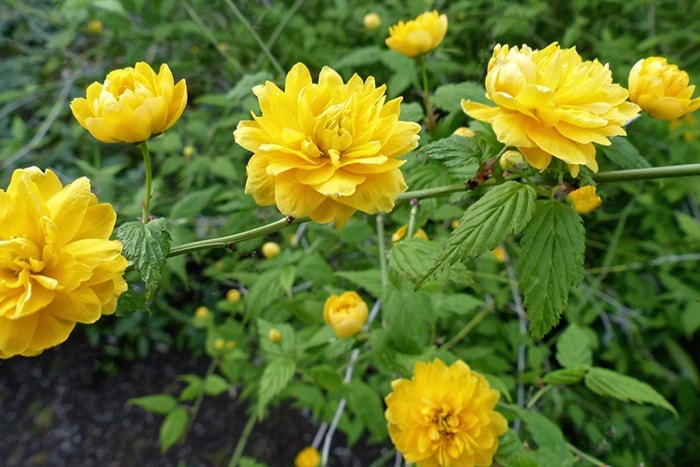Beware! It may be another bad year for northern tent and forest caterpillars if you had an infestation in your garden last year. We have recently discovered newly hatched larvae in our garden.
The northern tent caterpillars, or Malacosoma californicum pluviale, are easy to spot because they build silken tents on the tips of branches. And provided they are within reach, even by a ladder, they are relatively easy to dispose of before they do any serious damage to their host plant.
But forest caterpillars, or Malacosoma disstria, are a whole other kettle of fish. They do not build tents. The young larvae lay flat along the branch when they emerge from the tubular one inch (2.5 cm) egg mass where they have been hibernating all winter.
This makes them particularly hard to spot. Especially since the caterpillars are only about a tenth of an inch (3 mm) long right now. And...the egg masses are generally way up in the upper reaches of the tree canopy.
So...unless your infested tree is of the dwarf variety or you have a ladder to get you up higher, many of these little furry pests could be overlooked. Multiply anywhere from 100 to 350 hatching larvae per egg mass and you are probably looking at another infestation problem this year. Like us.
Thankfully, neither species does serious damage to the host plant...unless the plant is already in distress from another source. Apart from the chewed up leaves spoiling the overall aesthetic look of your landscape, that is.
And if you had an infestation last year, this outbreak will be your last for anywhere from seven to fourteen years. Unfortunately, sometimes the outbreaks can last three years so be prepared for another battle next year just in case.
There is more information about these two caterpillar pests on my website at www.duchessofdirt.ca. Click on "In the Garden" menu button, then "Insects We have Found". You will find both listed there.
•••
Thankfully, not all is disaster in the garden right now. There is much to be enjoyed on a walkabout with morning coffee or tea. We are really enjoying the scent emanating from the male Skimmia japonica. Cannot walk by without stooping for a closer whiff. Just have to watch for the bees. They are ecstatic over the flowers too.
Another plant from Japan (anything labelled 'japonica' comes from this country) has just burst bud...Kerria japonica. This is a multi-stemmed shrub with a vase-type form. Love it for the bright green, bamboo-like stems which look great in winter...and for the deep yellow, double pom-pom flowers right now. Not scented, but then these flowers are sterile so they do not need to attract a pollinator.
Was on my list to divide this plant as it is getting rather large for the space I have allowed it. However, the chore never trickled to the top of the infamous To-Do List before it flowered. Now I am forced to wait until fall to tackle the job.
There are always so many chores that need to be attended to at the beginning of gardening season. Makes one pooped just looking at The List. But sometimes one has to pause for just a moment, or ten, to admire a spectacular sight. Or video a special moment.
The other day I put everything on hold so I could record the momentous occasion of a pair of tree swallows building their nest in our swallow house. Finally. It has only taken them three years to make up their mind.
Leslie Cox co-owns Growing Concern Cottage Garden in Black Creek. Her website is at www.duchessofdirt.ca and her column appears every second Thursday in the Record.
